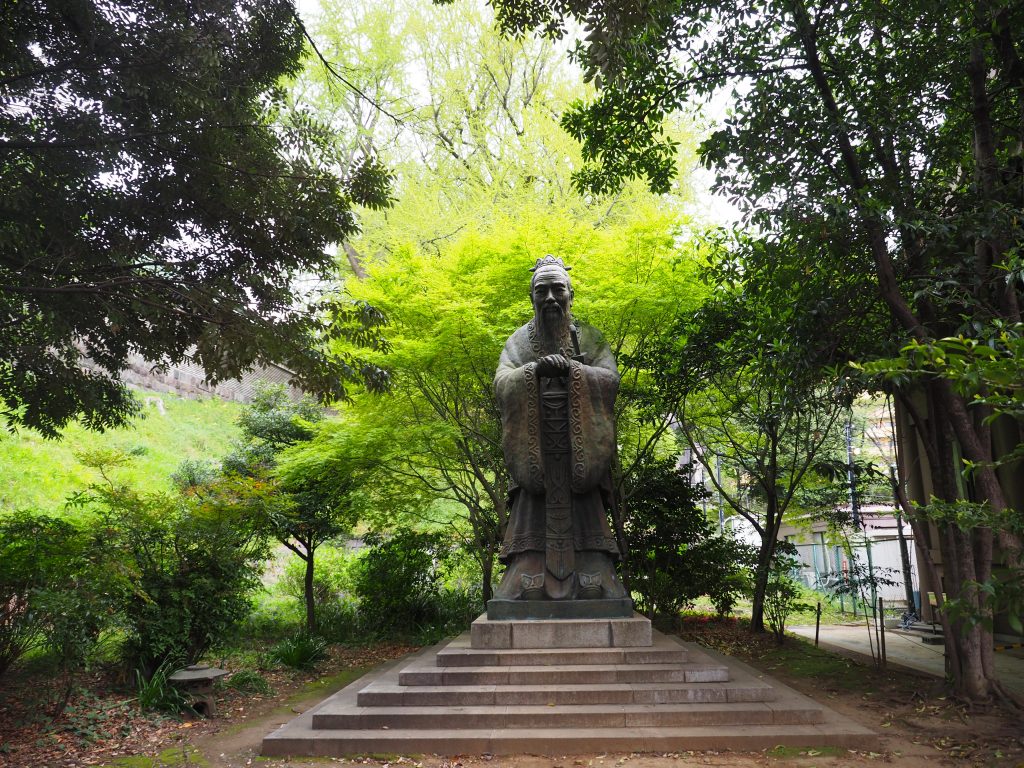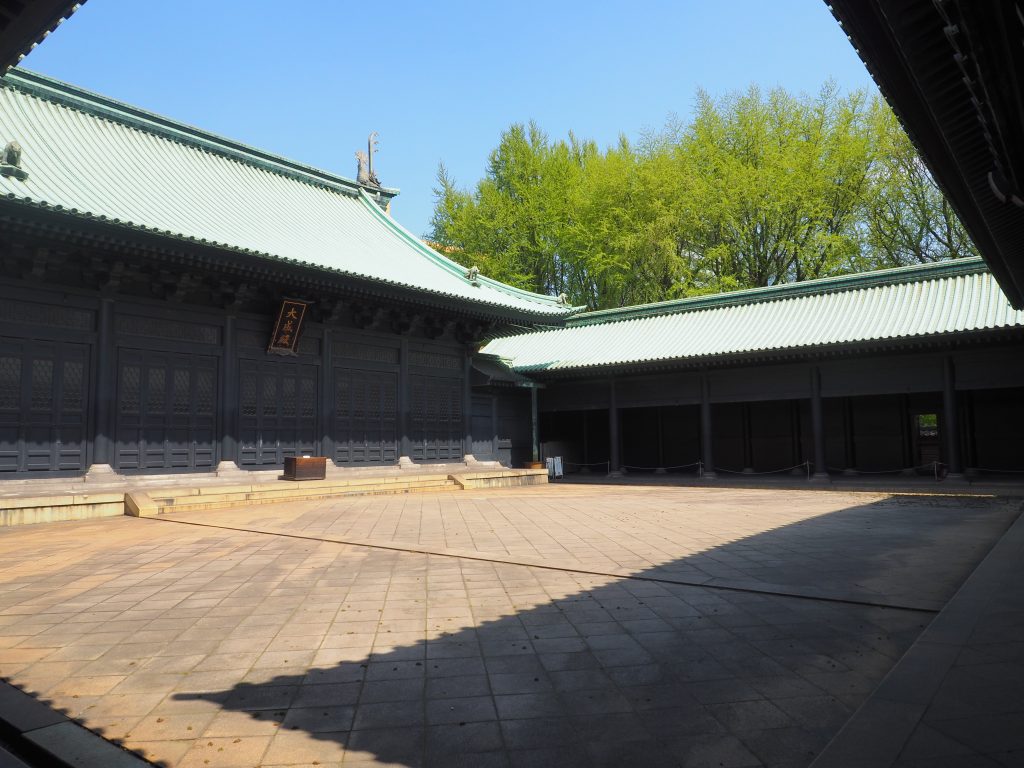I found this temple very different from all other temples because it is all painted black. Its only wooden original Nyutoku gate is painted entirely in Japanese black lacquer. The rest had to be rebuilt following the Great Kanto Earthquake of 1923, as it burned down. Reinforced concrete was used for the construction. Black makes a very interesting combination with teal colour of its roofs. Situated on a green hill, the temple grounds give an air of peace and solitude. Good for meditation as the place is almost empty.
The first Confucian temple on this site was built in 1690, however it is not preserved until today as it burned down as well as several subsequent buildings that followed. They all were painted vermillion. The first black painted building was constructed in 1799 and unfortunately it perished during the Great Kanto Earthquake of 1923. The reconstruction of the temple is designed by architect and professor of Tokyo Imperial University Engineering Department – Itó Chúta (1867-1954). The dedication ceremony of the newly reconstructed Yushima-seido took place here in 1935.
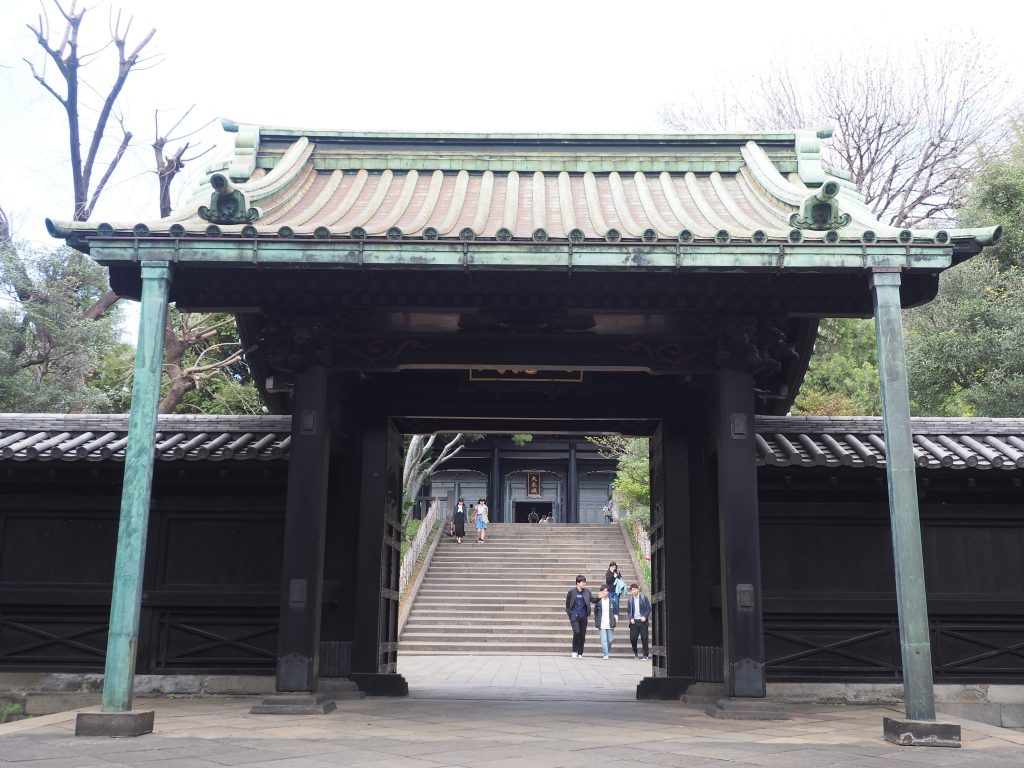
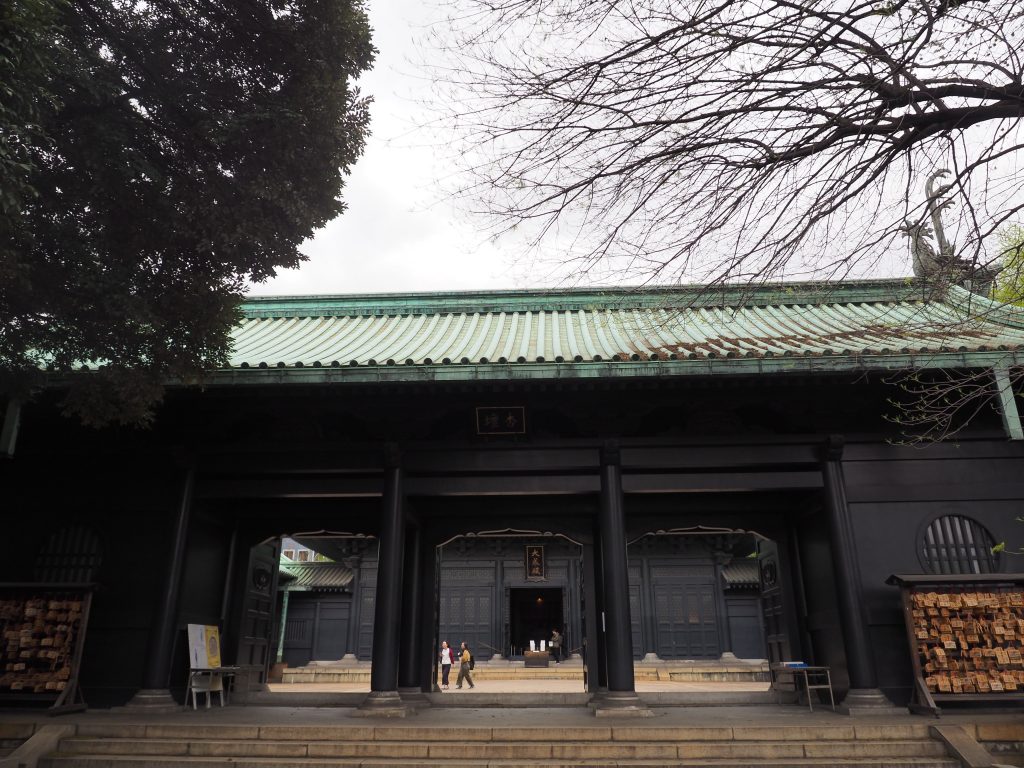
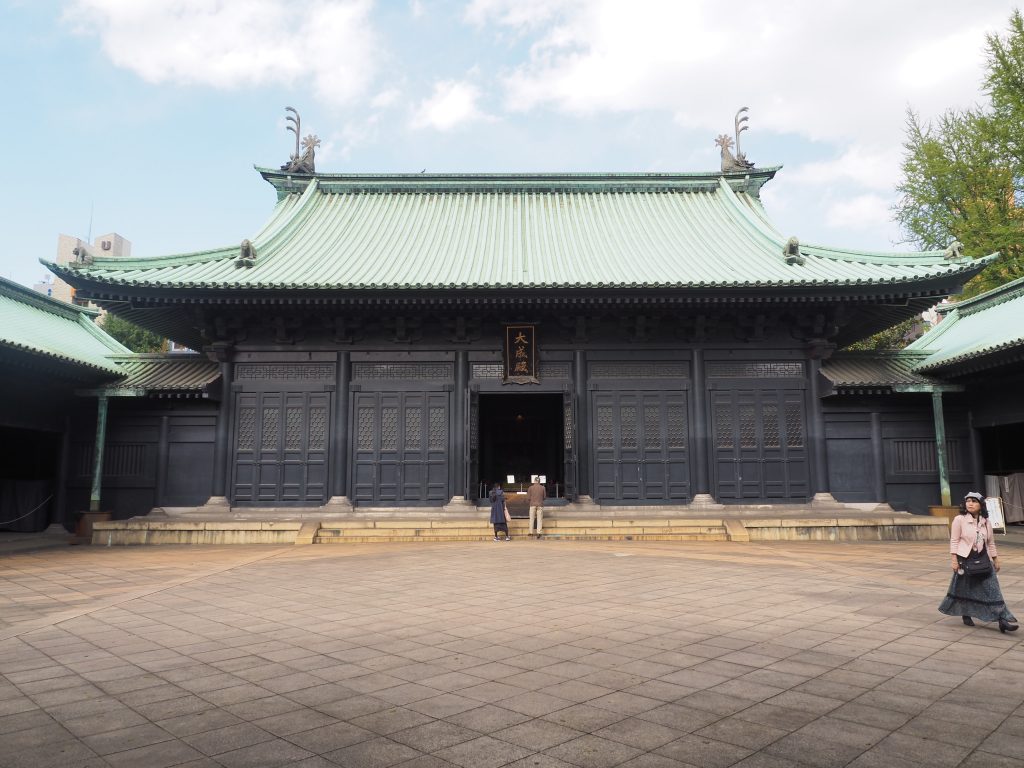
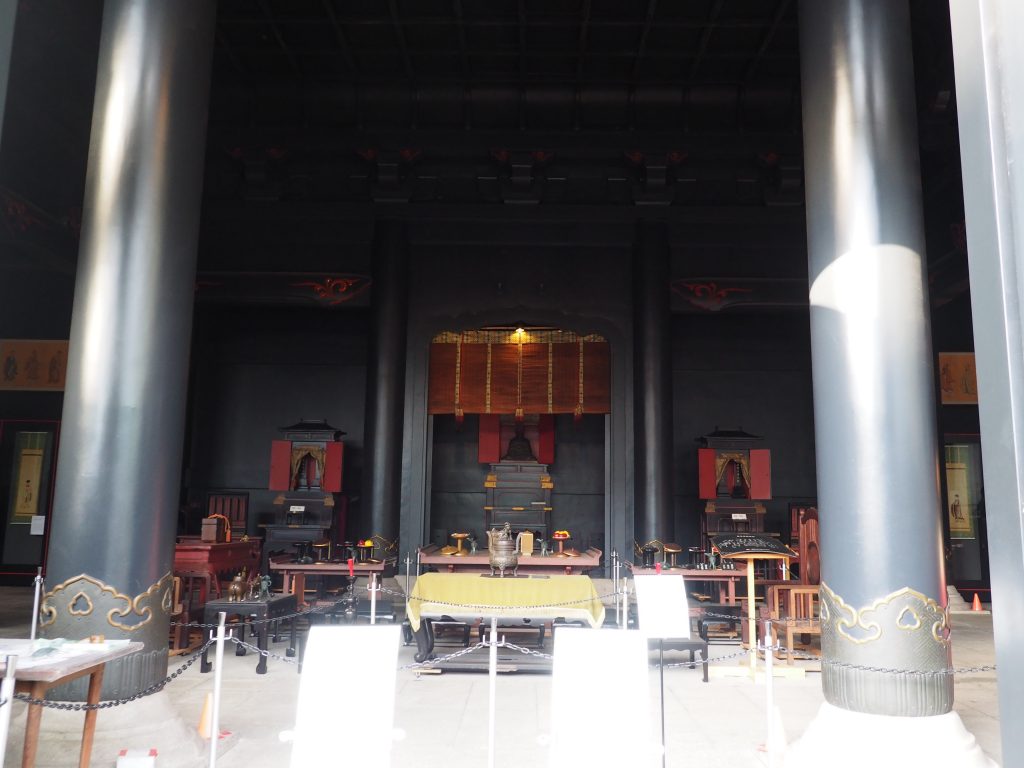

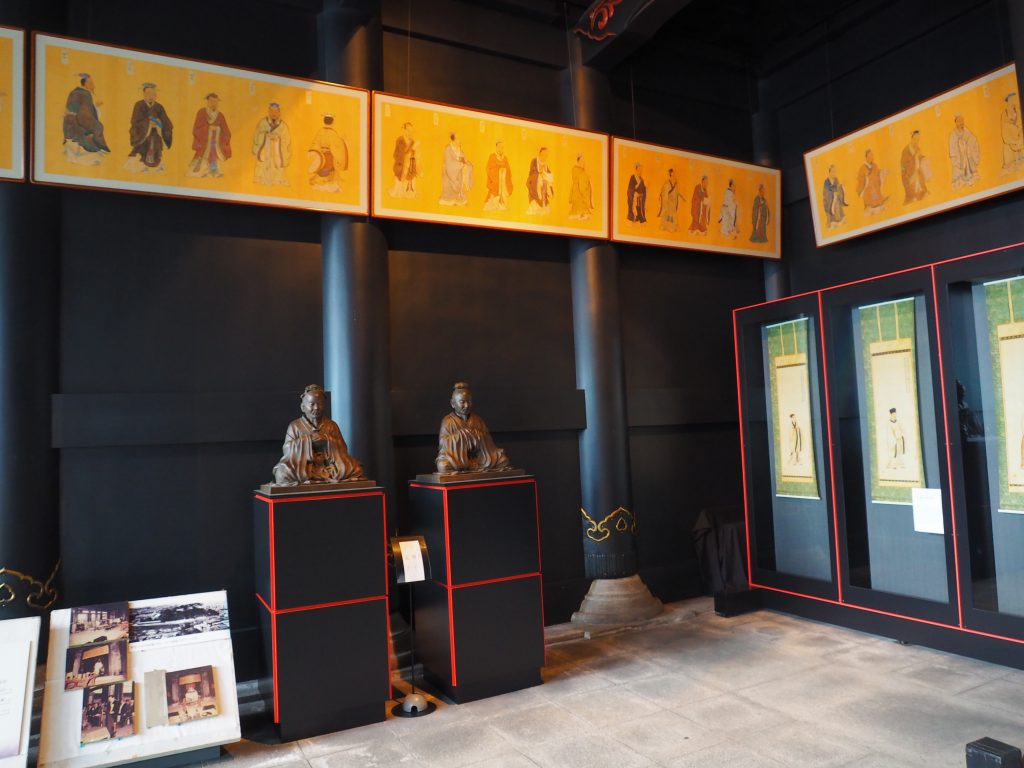
This little gadget fascinated me both by the ingenious way it was constructed and by the idea it conveys. It was constructed to visually demonstrate how crucial moderation is. Confucian deep ideas: Everything in moderation, Moderation in all things, Too much is not good, Too much is as bad as too little. The golden mean. I must say that no interactive exhibit anywhere had fascinated me more.
I kept pouring water into the originally slightly slanted dish. It begun to stand upright but then flipped over as I continued pouring and all water splashed out. Then the dish got back to its original position – empty. I cannot remember how many times I had repeated the experiment, many many times 🙂 But it has always functioned…
This is all about balance. We, or those smarter of us, realize the importance of it and strive for balance in our lives. Even beauty has something in common with balance, as beauty is a reflection of balance, and our beauty is the reflection of our inner balance. This is what I belive. However, it is hard to achieve this sort of balance and beauty and I know very few people who succeeded in doing so.
